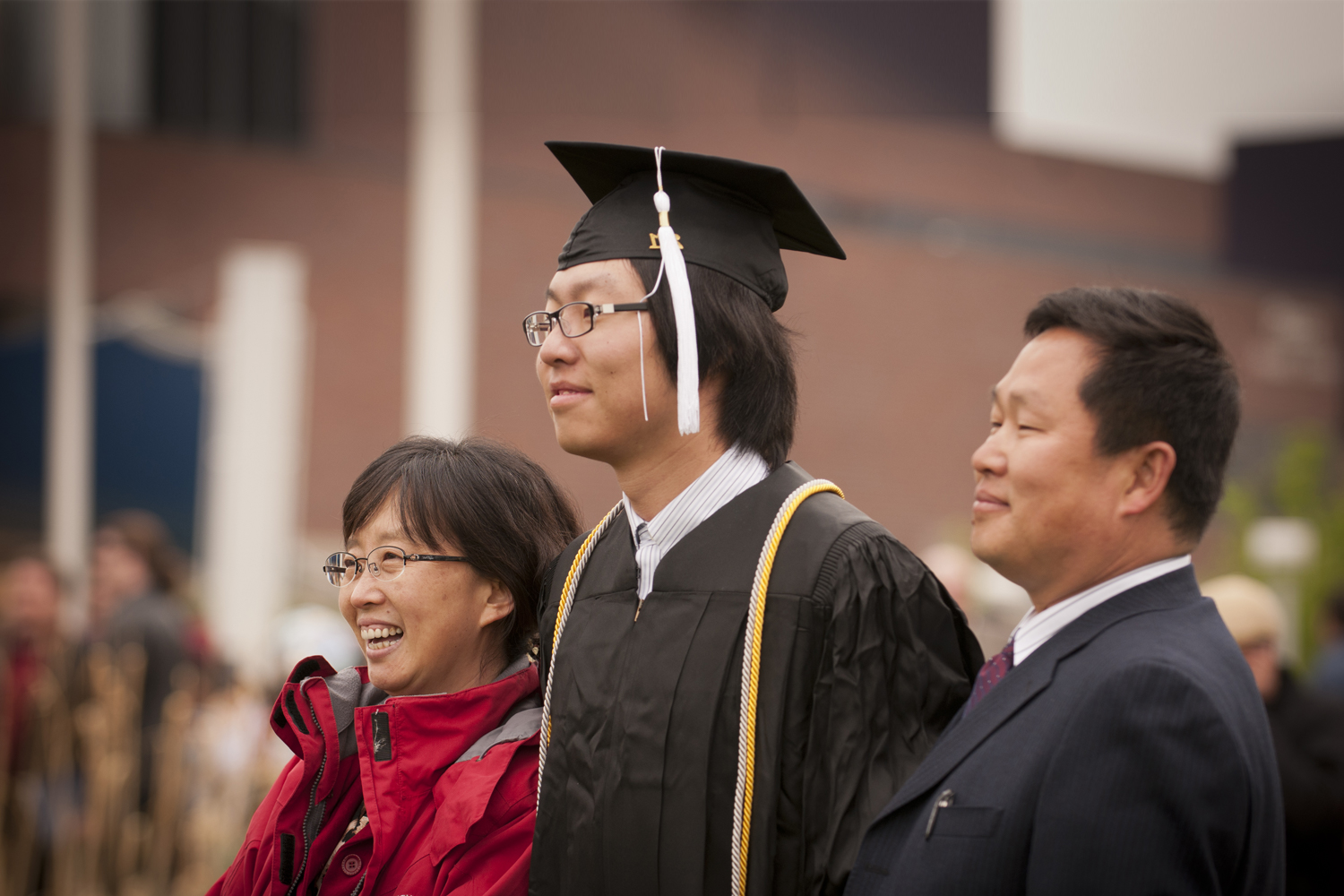ESL Academy Opens Its Doors
New learning center for international students
Feb 15, 2012By Kelsie McWilliams (News Editor)
The UCD ESL Academy encourages students to only use English, even when they’re conversing in social areas outside of the classroom. This helps students to become fully immersed in the language on a regular basis.
For international students, preparing for and adjusting to life as a student at CU Denver can be challenging—but the new UCD ESL Academy is here to help.
“In August of 2011, it was just a huge empty space. No walls, no furniture, nothing,” said Rebecca Fisher, director of the ESL Academy. Fisher attributed the quick and committed development of the center to David Clubb, director of the Office of International Affairs, who worked on the project for 3–4 months. By October 2011, Fisher came on board and assisted with the Academy’s progress.
“It’s been a very entrepreneurial process, like any business, to open our doors and welcome students,” said Fisher.
The ESL Academy is a brand new addition to UCD located on the 16th Street Mall in the Independence Plaza Building. Situated in the heart of Denver with easy access to Auraria Campus, in addition to a variety of restaurants and shops, the program aims to provide a comfortable environment for international students to practice and improve their English while also preparing them for academic success at UCD.
While students are enrolled at the academy, they are effectively considered students at UCD, according to the website. Once a student successfully completes the ESL Academy, that student automatically fulfills the language proficiency requirement at UCD; while this in turn makes students eligible for full admission to the university, it is not necessarily guaranteed.
The academy offers rigorous classes year-round and allows students to enroll for eight-week terms, but the classes are non-degree and not for credit. However, students of the academy are still required to pay tuition and student fees. They are also responsible for the costs of health insurance, books, and living expenses while enrolled, according to the website.
Because of these requirements, the program is intended to admit only the most dedicated of students. Students must apply online at http://esl.ucdenver.edu, and then go through a complex admissions process.
“We have to be very careful to make sure that serious students…are the students who are accepted,” said Fisher. “We test in-house; we use the ESL Accuplacer test. And we test and evaluate students’ writing, then do an interview. Our goal is to level-in students, to place students in a level at one time. And if we have multiple seats open, then we look at GPA and we cherry-pick the best students, the most serious.”
According to the academy’s website, students are initially placed into one of five levels: high beginning, low intermediate, intermediate, high intermediate, and advanced. Once students have completed a full term at the academy, they are tested again and have the opportunity to advance to the next level.
Through an emphasis on assessment and placement, the academy strives to separate itself from other programs in the Denver area. “Our program runs counter to other intensive programs in the area. There’s a total of 10 programs, and only four done by universities. And they all have open enrollments,” said Fisher. “But our program keeps the student-to-teacher ratio low while still having full classes.”
Fisher herself has played a big role in getting the academy running and keeping it going. “I was a director at Spring International Learning School for six and a half years. But when this opportunity came along, I couldn’t resist. It was the chance to make my own mark on curriculum, on a center in a way that I know will work,” she said. “I had to create a curriculum from scratch, including areas not always included in other programs.”
Instead of simply focusing on the English language, Fisher said that the academy places an emphasis on more cultural aspects, including etiquette.
“This kind of stuff is not always explicitly taught, including the pragmatics, the things specific to the university,” she said. “But we incorporate small group discussion on how to disagree with each other without being rude. A lot of these students are taught to never speak out in class or interrupt the professor. But it’s part of the academic culture in class in America. Polite, informed, thoughtful questions are welcome.”
In order to foster an environment where students can learn about the more casual components of American culture, Fisher has fostered an environment where students are accommodated in multiple ways.
“Once a student exits the class, we want them to continue to speak English in places like the bathroom and in the social areas,” Fisher said. And the center tries to encourage this in more ways than one. “We’ve implemented this badge system with bows and ribbons and feathers. It’s kind of a game where students encourage each other to use English. And I also want to hire about 4–5 students to work as conversation partners, to just have students there to answer any questions that [academy students] may have.”
The physical space itself is also warm and welcoming with comfortable social and dining areas. Students are encouraged to treat the academy as a home away from home, even though they are only allowed to speak English within the space. You can even find a copy of America (The Book): A Citizen’s Guide To Democracy Inaction by Jon Stewart sitting on a table, incorporating a more humorous element into the learning environment.
In addition to a challenging intellectual environment, the academy aims to encourage a sense of creativity as well. While it may seem a bit unusual, students can actually write on the walls of the space with dry-erase markers. When walking through the academy, one can see lists of idioms in English written out alongside words that students have defined. You can even spot elaborate doodles and drawings representative of and inspired by students’ own native cultures.
One other intriguing sight on the writable walls was a web diagram of the word “community” where students branched out and filled in bubbles connected to the idea. Each bubble demonstrated how the concept changed and evolved as the diagram grew and spread outward, showing what community means to the students with words like friends, family, and classmates.
Original Article: http://www.ucdadvocate.com/news/esl-academy-opens-its-door-1.2781991






